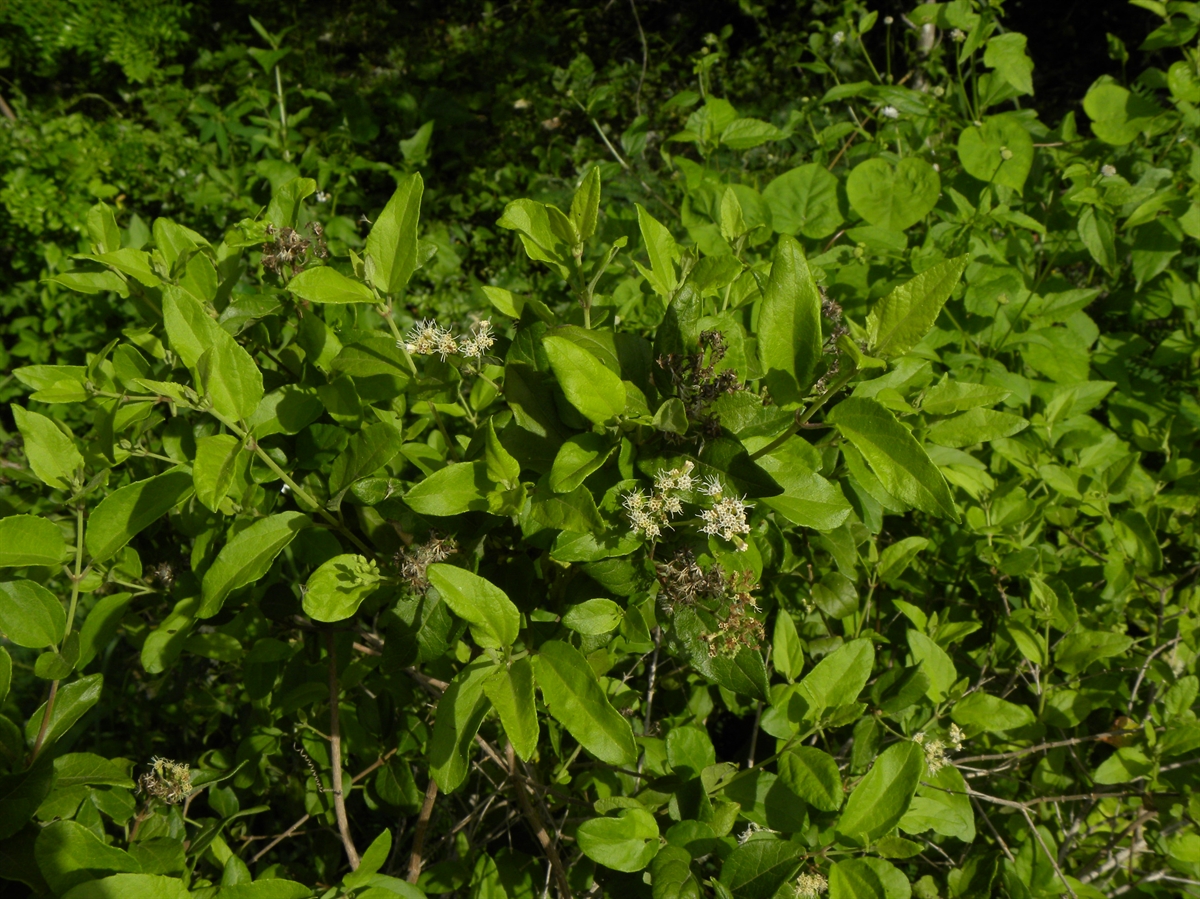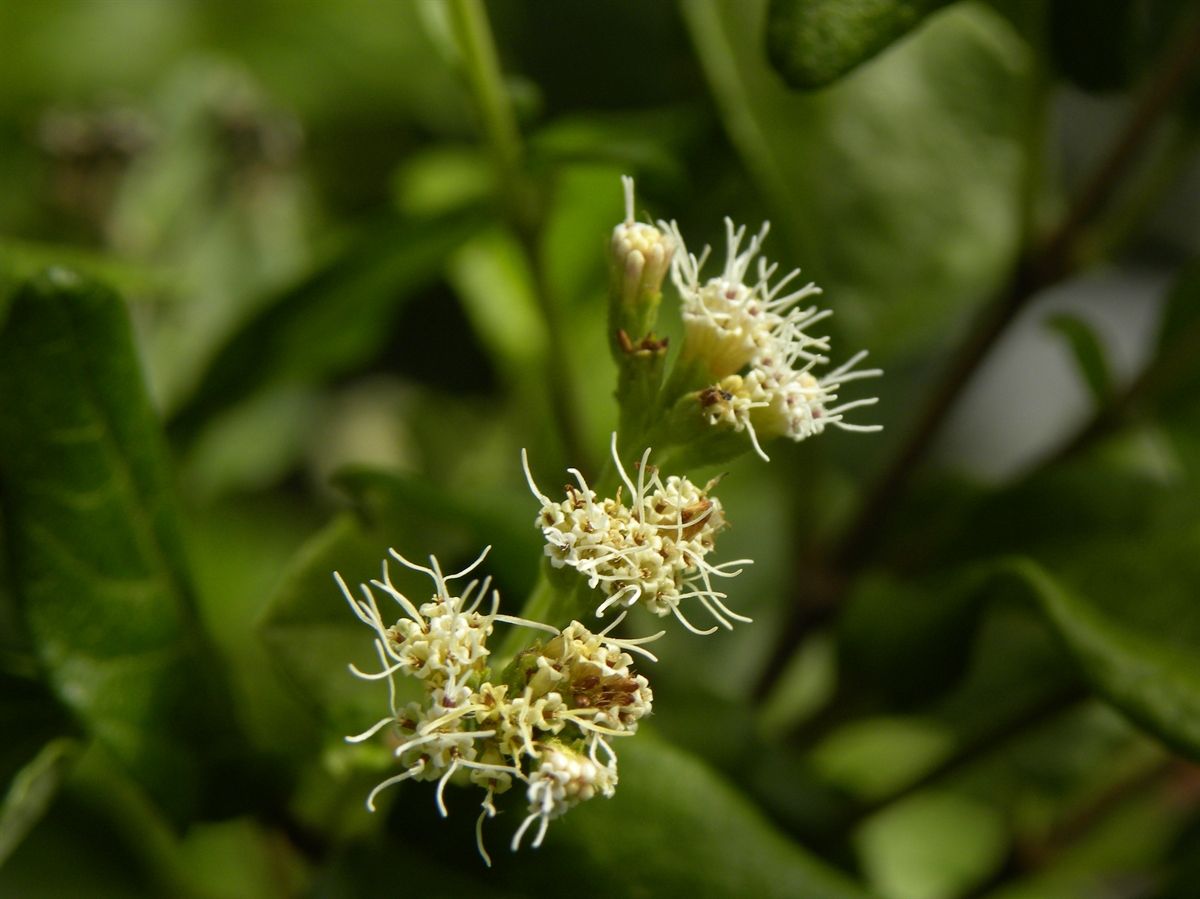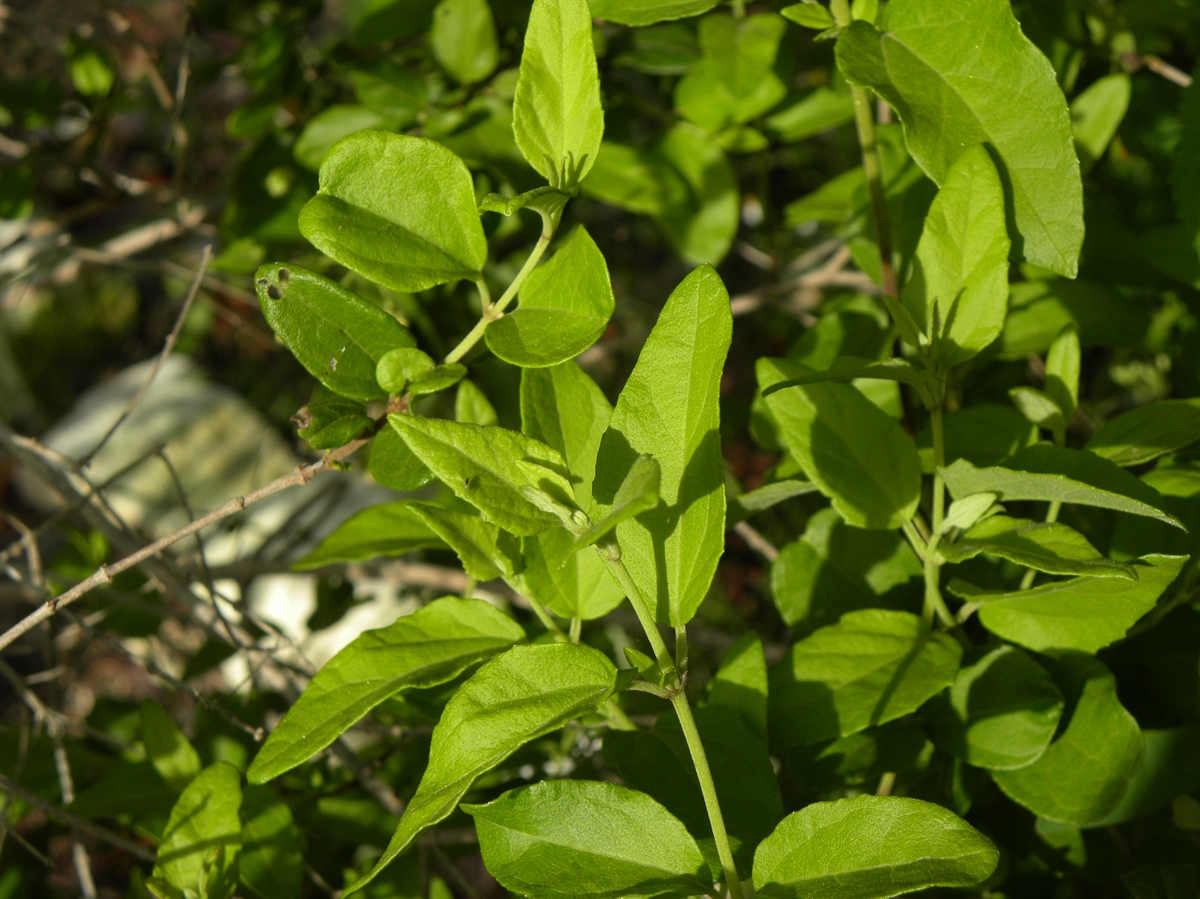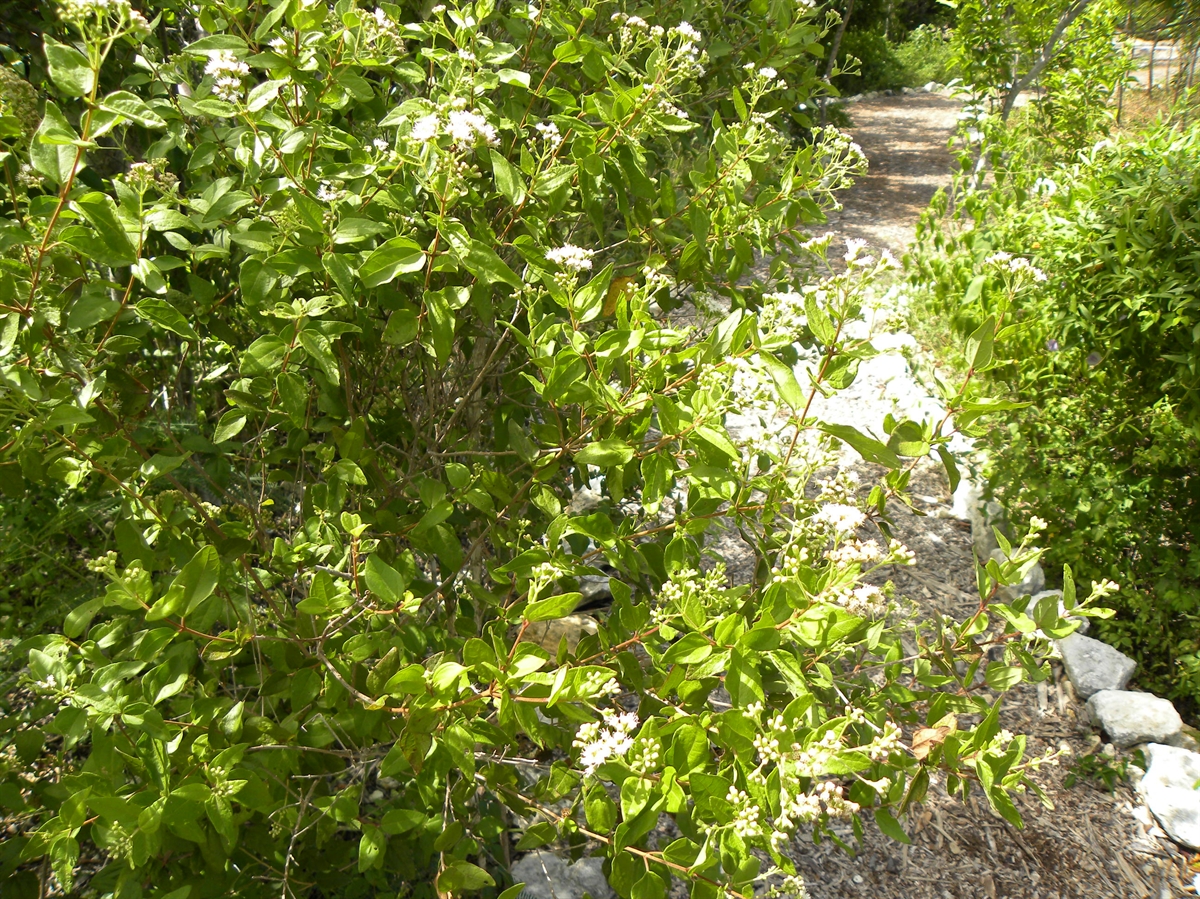Habit: Koanophyllon villosum grows as a small to medium sized shrub up to 3 meters in height (typically shorter). The stems and leaves often have a covering of short hairs. The leaves are arranged oppositely, are up to 7 cm long and 3 cm wide and are ovate shaped. The leaf margins range from entire to slightly dentate and have an obtuse leaf apex.
The complete, perfect, actinomorphic flowers are arranged in a series of heads that form corymbs. Each head contains up to 15 flowers and is subtended by an involucre that is 3 mm in height. The involucre is covered with a series of phyllaries. Each phyllary is linear. The calyx is a ring of hairs and the corolla has 5 white to pink petals that are fused to form a tube. There are 5 stamens fused to the base of the corolla tube. The ovary is inferior and contains a single seed. The fruit is an achene that is black at maturity with the calyx hairs forming a pappus that assists in fruit/seed dispersal.
Habitat: Koanophyllon villosum is considered a weedy species growing in Human Altered environments, the edges of Dry Broadleaf Evergreen Formations (coppice), and roadsides in Pine Woodlands.
Distribution: Koanophyllon villosum occurs throughout the islands of the Lucayan Archipelago as well as southern Florida and the Caribbean region.
Medicinal/Cultural/Economic usage: Koanophyllon villosum is used extensively in the Lucayan Archipelago for medicinal purposes including the treatment of circulatory problems, colds and fevers, diabetes, gastrointestinal illnesses, and infant issues.
Other species in the Caribbean are used to treat gas, gripes and dermatological problems such as sores and blisters.



